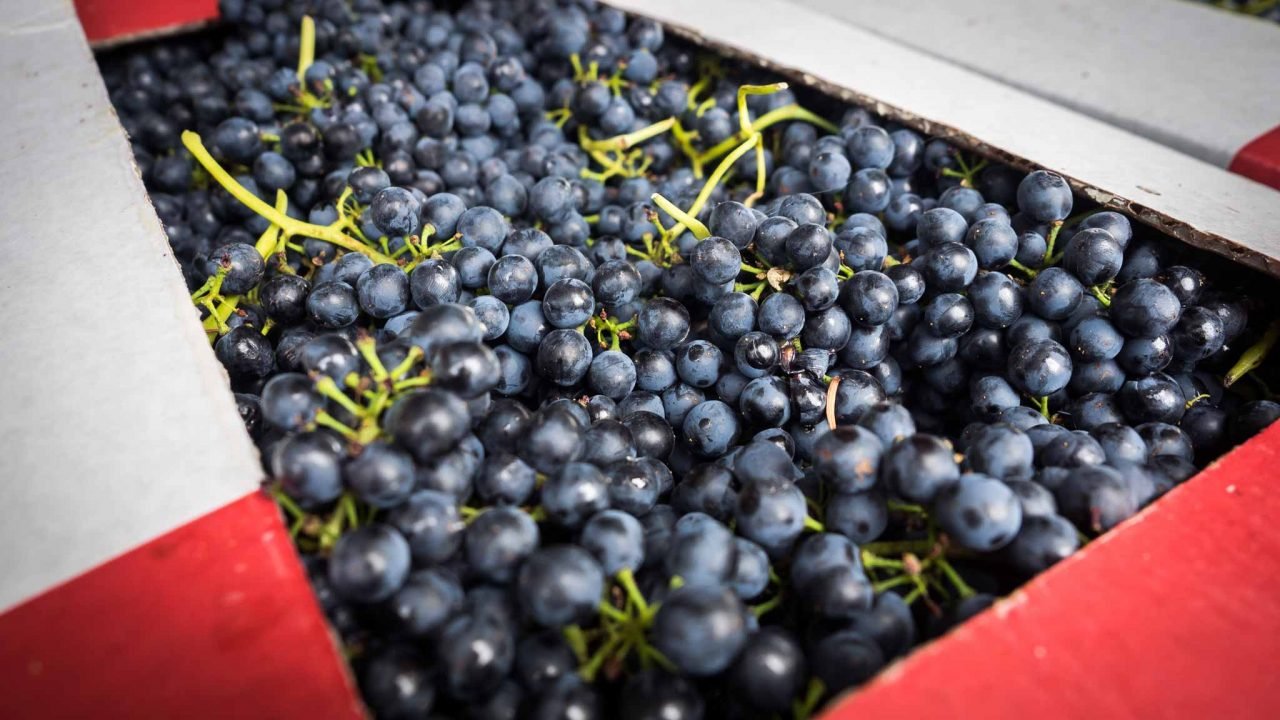Teachers’ Pet Shiraz
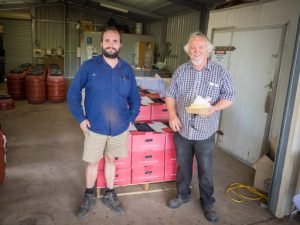 Teachers’ Pet shiraz is a name that we have been toying with for a while for one of our wines and this year we are making our first vintage!
Teachers’ Pet shiraz is a name that we have been toying with for a while for one of our wines and this year we are making our first vintage!
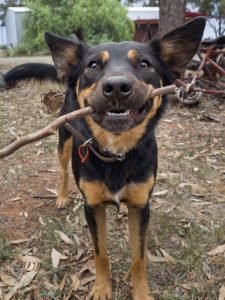 On Sunday, Phil drove up to Shiraz Republic in Heathcote to meet the team and pick up 60kg of freshly picked grapes. They were more than happy to show him around the winery and offer a tasting of some of their wines. The 2010 Heathcote shiraz is particularly good! If you visit, say ‘hello’ to Brian and Spencer who run the show. Good luck trying to get out of there without being distracted by their lovely dog Annie though!
On Sunday, Phil drove up to Shiraz Republic in Heathcote to meet the team and pick up 60kg of freshly picked grapes. They were more than happy to show him around the winery and offer a tasting of some of their wines. The 2010 Heathcote shiraz is particularly good! If you visit, say ‘hello’ to Brian and Spencer who run the show. Good luck trying to get out of there without being distracted by their lovely dog Annie though!
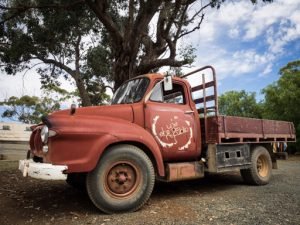 It’s also a photographers dream. There is all of the old farm machinery rusting away and their classic Bedford truck which is still in use around the vineyard
It’s also a photographers dream. There is all of the old farm machinery rusting away and their classic Bedford truck which is still in use around the vineyard
Step by Step
There are several stages to making a batch of wine, the first is de-MOGing. MOG means Material Other than Grapes which includes the leaves, stalks, bits of wood and of course spiders! It took us around an hour per 20kg box of grapes to clean them up, but we were pretty thorough. We would use a de-stemmer/crusher for batches any bigger than this. This handy machine does the hard work for you but will not remove those pesky bugs. They say it all adds to the flavour!
Next up is the crush. This can be done with a machine but we opted for the more traditional and fun method – feet! After a good scrub Andi jumped in and stomped all over the (mostly) spiderless grapes.
Here comes the science
We then needed to measure a number of things about the juice which will help us make decisions on the winemaking process:
- Baumé – Measures the density of the liquid and gives a good estimate of the final alcohol content
- pH – Measurement of the acidity of the grape juice – pH can be adjusted to give a more balanced wine. Having the ideal pH also means that the wine will more thoroughly ferment and be more resistant to microbes so will last longer in the bottle
- Temperature – Important as the temperature can affect the Baumé and pH readings
Our juice is very sweet and with quite low acidity so we balanced this out by adding 2 grams per litre of tartaric acid. We ended up with a nice balance between the sugars (Which will mostly turn to alcohol) and the acids so fingers crossed this will give us a nicely balanced wine at the end of the process!
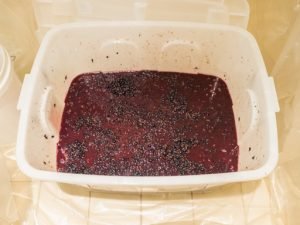 We are being brave for our first vintage and aiming for a ‘natural ferment’. This means that we are relying on the natural yeasts present on the grapes to start the process. Natural ferments are less predictable, since its not possible to measure how much yeast is in the mix. They can result in more complex flavours in the finished wine though. Natural yeasts will rarely fully ferment a wine since they die off with low levels of alcohol. We will therefore add some cultured yeast in a few days depending on how things progress.
We are being brave for our first vintage and aiming for a ‘natural ferment’. This means that we are relying on the natural yeasts present on the grapes to start the process. Natural ferments are less predictable, since its not possible to measure how much yeast is in the mix. They can result in more complex flavours in the finished wine though. Natural yeasts will rarely fully ferment a wine since they die off with low levels of alcohol. We will therefore add some cultured yeast in a few days depending on how things progress.
From here its a case of putting a lid on and waiting a couple of days for the fermentation to start!
More coming soon

